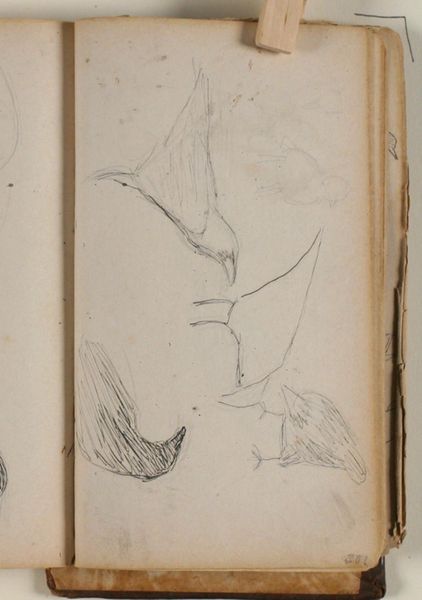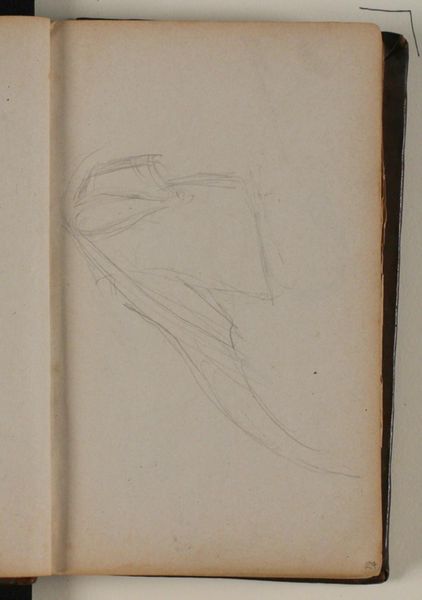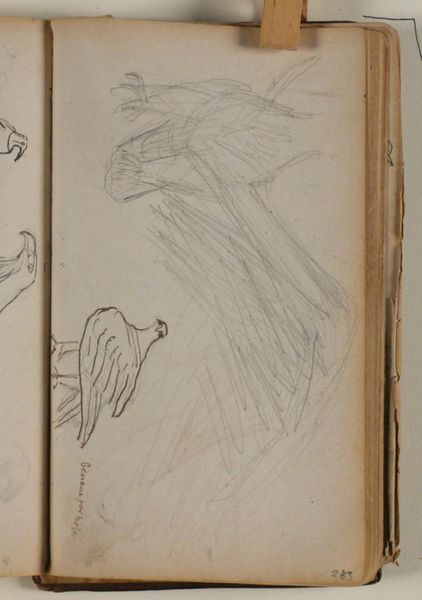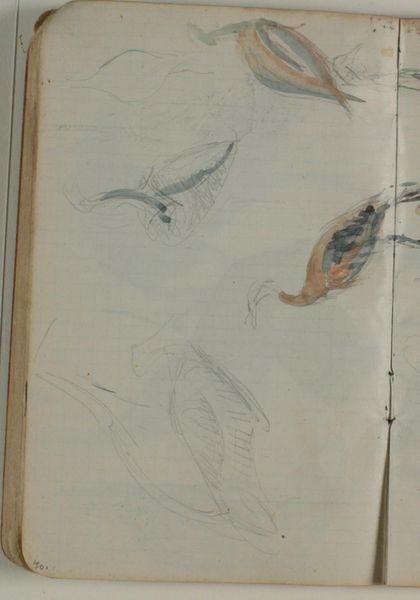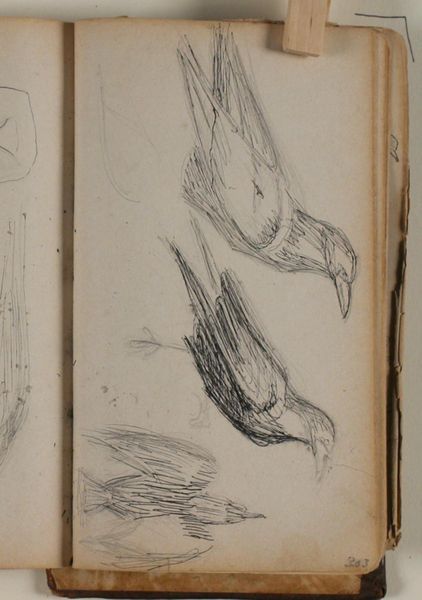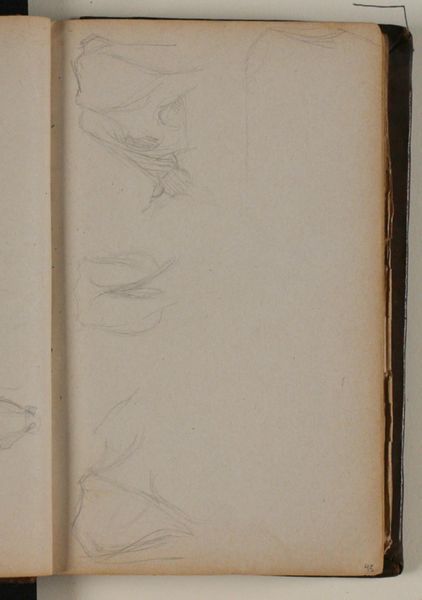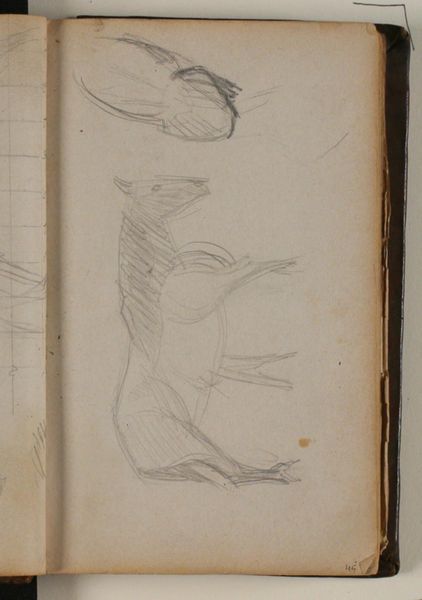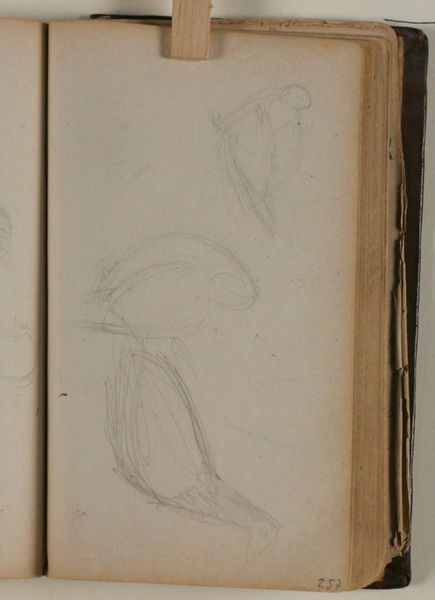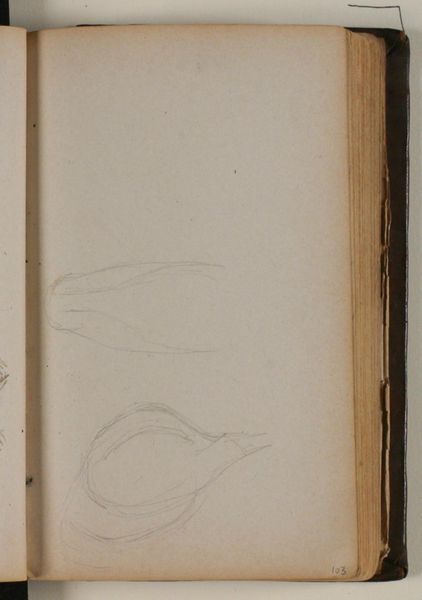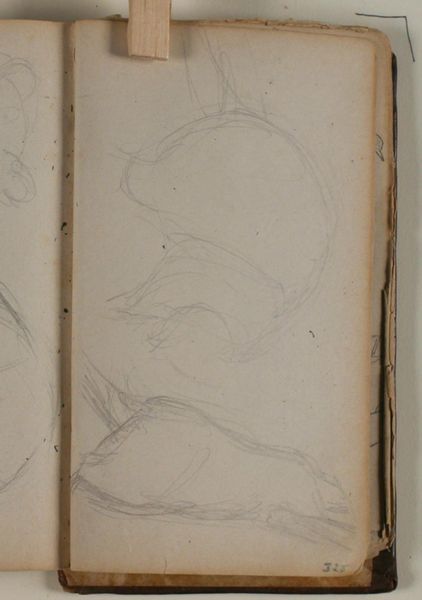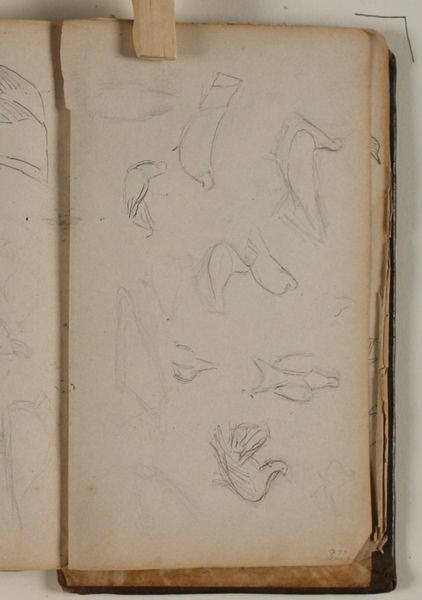
drawing, paper, pencil
#
drawing
#
figuration
#
paper
#
pencil
Editor: Here we have *Studier af fasaner*, or "Studies of Pheasants," by Niels Larsen Stevns, made sometime between 1864 and 1941. It's a pencil drawing on paper, a page from a sketchbook, really. I'm struck by how raw and immediate it feels, like a quick record of observations. What can you tell us about it? Curator: I'm intrigued by the use of readily available materials: pencil and paper. This signals accessibility and, crucially, portability. We must ask, who had access to these materials at this time, and how does the ability to create such studies relate to social class and the means of artistic production? Was this sketch intended as a preparatory study for a larger, more ‘finished’ work, destined for market and consumption, or does its value lie precisely in its intimacy, as an insight into the artist's process? Editor: That's a great point. So, are you saying that the *choice* of materials and the way they’re used tells us something about the art market and maybe even the artist’s status? Curator: Exactly. Consider the labour involved. A quick sketch demands far less labour than, say, a fully rendered oil painting. But who benefits from that reduced labour? Is it the artist, who can produce more works, or the consumer, who gains access to art at a lower price? The ‘unfinished’ quality challenges conventional ideas about the value of artistic labour and the traditional hierarchy separating the sketch from the final piece. And, what does it mean to call it “art” at all? How are our consumption habits influenced by this distinction between “high” and “low” art? Editor: That is a fascinating perspective. I had only thought of it in terms of the artist trying to capture a fleeting image of a bird, not in relation to economics. Curator: Thinking about the material and means of production broadens our understanding beyond a purely aesthetic appreciation. It compels us to analyze the socioeconomic contexts in which art is made, distributed, and ultimately, consumed. Editor: Well, this has really changed my understanding of what this little drawing might represent. It’s more complex than I initially thought. Curator: Indeed, the humblest sketch can reveal profound truths about the world.
Comments
No comments
Be the first to comment and join the conversation on the ultimate creative platform.
